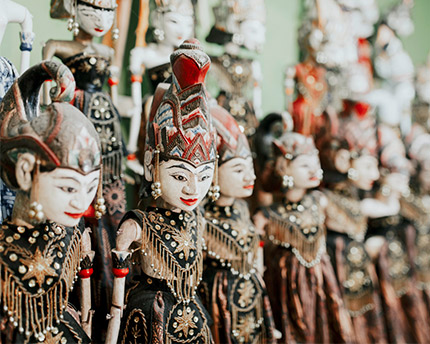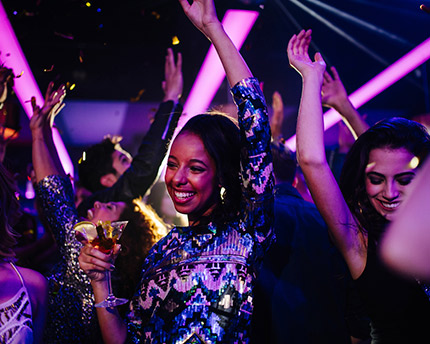Shadow theatre is one of the most popular and traditional dramatic arts in South-East Asia. In Indonesia, and in Java in particular, warang puppet theatre has been an important way of telling epic and humorous stories for centuries.
This post reveals all you need to know about the most famous of the many styles of puppet theatre: warang kulit. This type of leather puppet theatre is widely spread across central Java. Read on to find out more about this ancestral art and learn where you can enjoy a warang kulit show on your trip to Jakarta.
What is wayang kulit puppet theatre?
Wayang kulit puppet theatre is the most well-known style in the large Indonesian family of shadow theatre known as wayang. Kulit means “leather” and refers to the leather used to make the puppets, which are supported using buffalo horns and bamboo sticks.
The stories told in wayang kulit shows are normally inspired by two epic Hindu texts: the Ramayana and the Mahabharata. Other plays also recount local legends.
The origins of wayang puppet theatre aren’t clear. The two most widely accepted theories are that it either developed independently on Java, or was an important cultural import from India, arriving in Indonesia at the same time as Hinduism and Buddhism in the early centuries AD. Either way, the oldest records of this type of puppet theatre date from the 9th century.
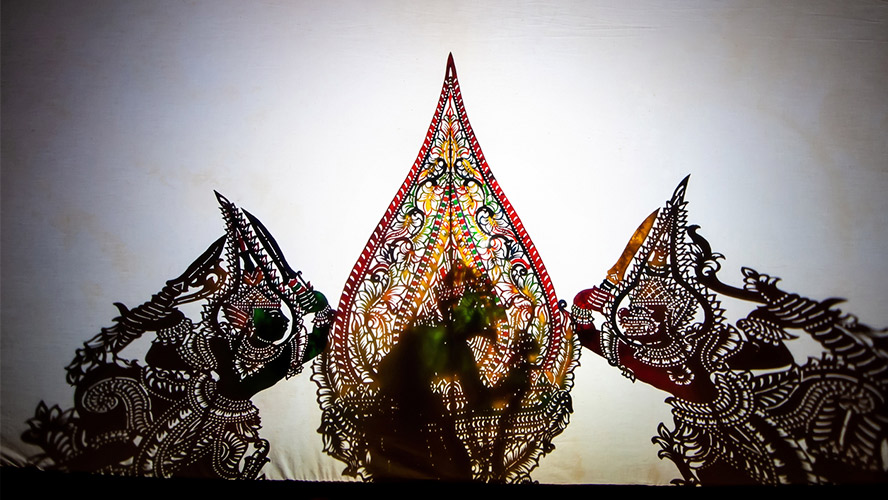
Wayang kulit is a type of shadow theatre and the puppets are moved by puppeteers behind a screen. In olden times, an oil lamp was used to illuminate the scene, which was watched through a cotton screen. Electric lights are more popular these days, although traditional lighting is still used in Bali.
Types of puppets
Each style of wayang theatre uses different types of puppets, depending on the materials from which they are made, and there are even regional variations within the same style. The most popular traditions of wayang kulit are from Surakarta and Yogyakarta, two cities in the centre of Java. Beyond Java, you’ll see more compact figures in Bali and more naturalistic puppets in Lombok.
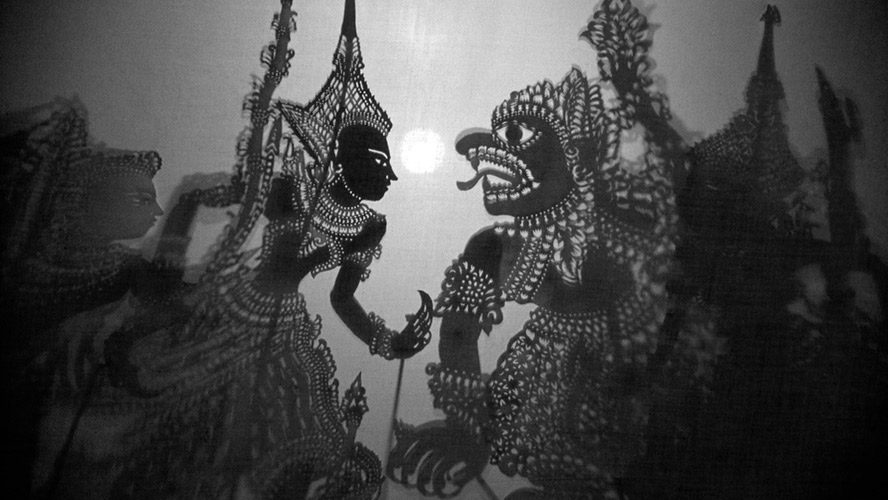
Generally speaking, characters in wayang kulit puppet theatre belong to a family called “punokawan”, which translates as “jesters”. They appear in humorous stories that feature comedy, gossip and local affairs.
Making a wayang kulit puppet takes several weeks of handcrafted work and artists often collaborate in groups. They start with a rawhide model that is gradually given shape, and holes are punched for the mouth and eyes. Once the puppets are made, they are softened with glass bottles and details are added before they are painted.
Intangible Heritage of Humanity
In 2003, UNESCO designated wayang kulit as Intangible Heritage of Humanity, along with two other styles of wayang: wayang klitik (which uses flat wooden puppets) and wayang golek (which uses three-dimensional wooden puppets).
In return, UNESCO asked the Indonesian people to preserve this ancient tradition.
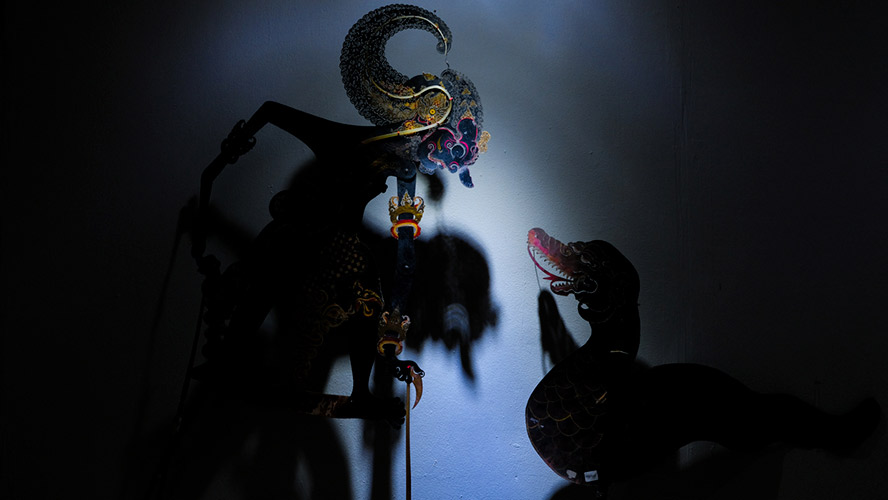
Where to enjoy a show in Jakarta
Jakarta isn’t one of the Indonesian cities with the biggest shadow theatre tradition (Surakarta and Yogyakarta are the two capitals of the art) but you can certainly find places to enjoy an excellent puppet show.
Jakarta History Museum puts on wayang kulit shows every other Saturday evening. The building originally opened in 1778 as the Batavia Arts and Science Society. Since 1862, it’s been one of the Indonesian capital’s most important museums.
Another good place to enjoy a wayang kulit puppet show is the Wayang Museum. It puts on short shows that last around an hour every Sunday morning.
The two museums are in Fatahillah Square, in Jakarta Old Town, and both buildings are typical examples of the Indonesian capital’s colonial architecture.
Where to stay in Jakarta
The best hotel in Jakarta is undoubtedly The Orient Jakarta, a Royal Hideaway Hotel. This boutique hotel has an unbeatable location: Jalan Sudirman (Sudirman Road), the most important thoroughfare in the city. Jalan Sudirman is home to Jakarta’s most important restaurants and shops, making it the perfect location for exploring this huge city.
Decoration at The Orient Jakarta is inspired by ancient oriental motifs and is highly respectful of the local culture. Its 153 rooms are made from Indonesian materials and decorated with local handcrafted artworks. And if that weren’t enough, the hotel also has impressive panoramic views of the Jakarta skyline.




































































